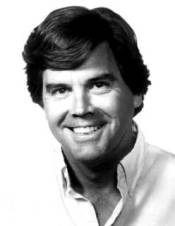Experiments with Un-tethered Interaction
 Turner Whitted,
Microsoft Research
Turner Whitted,
Microsoft Research
jtw@microsoft.com
Seminar on People, Computers,
and Design
Stanford University March 9, 2001
As HCI moves off the desktop and into the un-tethered world, the familiar physical elements of the interface must give way to new styles of interaction using a new class of devices. And of course, designers must confront a whole new class of physical constraints.
Un-tethered UI is as much about power and bandwidth as about psychology, visual design, and ergonomics. Microsoft Research's hardware devices group has been experimenting with small, wearable devices that sense user state and transmit it to the computing environment without consuming much power or bandwidth. This talk is an overview of the experiments and an explanation of the constraints for un-tethered interaction.
Turner Whitted is a senior researcher in Microsoft Research's hardware devices and graphics groups. He has been an adjunct professor of computer science at the University of North Carolina at Chapel Hill since 1983 as well as a cofounder and director of Numerical Design Limited. Prior to that he was a member of the technical staff in Bell Labs' computer systems research laboratory. He earned BSE and MS degrees in electrical engineering from Duke University and a PhD from North Carolina State University. He is an Associate Editor-in-Chief of IEEE Computer Graphics and Applications, was papers chair for SIGGRAPH 97, and is an ACM Fellow. He is a private pilot and an avid sailor.
View this talk on line at Stanford Online
Titles and abstracts for all years are available by year and by speaker.
For more information about HCI at Stanford see